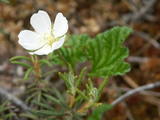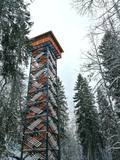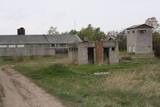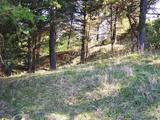| Нo | Название | Описание |
|---|---|---|
|
Der Turm war der Eckturm der mittelalterlichen Stadtmauer von Pärnu. Der Turmhof ist ein beliebter Ort für Kunsthandwerkermärkte und ein Veranstaltungsort. |
||
|
The Tērvete Nature Park is located in an area which is not particularly typical of the Zemgale region – the distinct Tērvete River valley. Along its banks there are vast forests which have been nicely adapted to leisure activities. There are natural treasures, as well as an outstanding cultural and historical heritage in the area. The Tērvete Nature Park is one of the most popular tourist destinations in Zemgale. People are interested in the Park of Old Pines, the lovely pine forest, the Sprīdīši arboretum, the Tērvete, Klosterkalns and Svētkalns castle hills, the memorial museum “Sprīdīši” which commemorates the great Latvian author Anna Brigadere, various attractions for children, lovely landscapes, a dense network of pathways, etc. The nature park was nominated as the most family-friendly location in Latvia in 2004. |
||
|
Augstā un purva vidusdaļā - pārejas tipa purvs, putniem nozīmīga vieta. Apmekļējumiem nav piemērota infrastruktūras trūkuma un sugu aizsardzības nolūkā. |
||
|
В давние времена проспект Курмаяс был главной дорогой, ведущей на пляж. Вдоль проспекта стоят роскошные дома и виллы рубежа XIX – XX века, принадлежащие аристократам – обожателям моря и побережья. Здесь установлены отлитые в бронзе скульптуры из гимна Лиепаи «Город, в котором рождается ветер» - «Лодочник», «Янтарные латыши», «Ворона» и др. В конце проспекта возвышается памятник погибшим морякам и рыбакам (установлен в 1977 г.). Он символизирует женщину, которая ждет возвращения домой своего мужчины. На проспекте Курмаяс 16/18 находится Лиепайский историко-художественный музей. Музейный фонд (всего более 100 000 экспонатов)разместился в построенном в 1901 году в стиле эклектизма (с элементами готики) доме, который строился по эскизам берлинского архитектора Эрнеста фон Ине и проекту П. М. Берчи. В экспозиции представлена каменная стела – единственная подобного рода находка в странах Балтии с могильника под Гробиней (могильник Скандинавов). |
||
|
In mid-summer, the farm features the beautiful blooms of rapeseed and flax. A special facility for pressing rapeseed and flax seed oil is on site. You can watch the oil pressing process and purchase some of the resulting oil.
|
||
|
This is a quick boat ride from Tartu down the Emajõgi River to Piirissaare Island in Lake Peipsi (Peipsi järv). Along the lower reaches of the river are major wetlands which are of enormous importance for birds.
|
||
|
Даже современным знатокам трудно предугадать, где в Рагасциемсе находилась бывшая зенитно-ракетная база, целью которой была защита западной границы СССР.
|
||
|
Dieser Teil des Waldweges führt durch das historische Zentrum von Valmiera. In Valmiera können Sie die St.-Simon-Kirche, die Ruinen der Livländischen Ordensburg und das Valmiera-Museum besuchen. Wir empfehlen auch, den Barfußweg in den „Sajūtu Parks“ (Park der Sinne ) zu gehen. Nach der Besichtigung von Valmiera führt der Waldweg durch den Atpūtas-Park (Erholungspark), den wunderschönen Kiefernwald und das Winterskizentrum Baiļi. Weiter gehen Sie den Abuls Trail entlang und biegen am Ufer des Flusses entlang bis zur Brenguļi-Brauerei, die in einem alten Wasserkraftwerk gebaut wurde. Hier können Sie ungefiltertes und nicht pasteurisiertes Bier genießen. Weiter unten betreten Sie unbewohnte Waldgebiete und das geschützte Landschaftsgebiet Nord-Gauja. Die Wälder in Nord-Gauja („Ziemeļgauja“) sind sehr vielfältig. Es gibt alte oder natürliche boreale (nördliche) Wälder und Sumpfwälder, Eichenwälder, Schwemmwälder (gebildet auf Flusssedimenten, die regelmäßig überfluten) und gemischte Eichen-, Wych-Ulmen- und Eschenwälder entlang des Flusses. Die Tour endet in der Stadt Strenči. |
||
|
Boaters along the Gauja will see the Velnala cliffs, which are the last mighty wall along the banks of the Gauja River valley – approximately 15 m high. From the opposite shore of the river, where there are leisure facilities, once can spot the Krimulda Devil’s cave, which is in the centre of the cliff, is some 19 m deep, and is 4.7 m high. There were once wooden structures which allowed people to visit the cave, but that stopped in 1980 for safety reasons. If you head toward Turaida along the lower part of the basic Gauja River shoreline from the Velnala cliffs, then, particularly when the trees are bare, you will see the mighty sandstone Piķene cliff. At its foot is the Piķene beaver trail, which is approximately 1 km long. On quiet evenings, you may well spot a beaver at work. Along the path you will see the Small Devil’s cave (5 m deep) with the Wisdom Stream that flows out of it. The Aunapiere cave is almost as deep. Between the cliff and the Gauja are several small rivulets which are of enormous importance in preserving the diversity of the surrounding environment. |
||
|
In Liepene Gebiet von Ventspils befindet sich die ehemalige Abteilung der Grenzwache des Meeres, die heutzutage ein Privateigentum ist und als Touristenunterkunft genutzt wird.
|
||
|
Unweit von der Rigaer Ringstraße befindet sich auf dem rechten Ufer der Daugava ein vom Bildhauer Ģ. Burvis 1994 errichtetes Denkmal – Gedenkzeichen für Daugava-Liven und ihren Anführer Ako, der 1206 den Aufstand der Liven gegen Kreuzritter leitete. In der Umgebung vom Denkmal ist entlang des Daugava-Ufers ein breiter Platz für Erholung und Spaziergänge eingerichtet. Es ist einer der malerischsten Plätze an den Ufern des Daugava-Unterlaufes. Etwas weiter sind am Flussufer die Informationsstände zu finden, die die Geschichte der Daugava-Ufer vor dem Bau des Rigaer Wasserkraftwerkes darstellen. |
||
|
Es ist ein beliebter Ort für Mahlzeiten im Zentrum von Ogre. Das Café befindet sich in einem Gebäude, das vor dem Ersten Weltkrieg gebaut worden ist und wo sich während der Sowjetzeit ein Polizeirevier befand. Hier werden Musikabende organisiert. Lettische Küche: Gericht aus geschichteten Käsen, Lammfleischsuppe, Pilzsuppe, Graupen mit Pilzen, Welsfilet, Sorbet aus Waldbeeren, Pfannkuchen. Das besondere Gericht: Gebackener Käsekuchen mit Beeren. |
||
|
This is a segment of the shore of the Bay of Rīga that is around 40 km long and features the valleys of three major rivers – the Lielupe, Daugava and Gauja river. There are dune formations, biotopes, seashore meadows and forested seashore dunes which are an important recreational resource. |
||
|
Dabas liegumā "Lielie Kangari" atrodas 33 metrus augsts skatu tornis, kura virsotnē atrodas platforma, no kuras paveras skats uz Kangaru ezeru un Lielkangaru purvu. Dabas liegumā izbūvēta arī nepilnu divu kilometru gara pastaigu taka ar tiltiņiem un skatu platformu pie ezera. Takas sākumā izvietotais veselības maršruts ikvienu apmeklētāju aicina kārtīgi izvingroties un izkustēties. Apmeklētāju informēšanai un izglītošanai visas takas garumā izvietoti arī informatīvie stendi ar fotogrāfijām, kas apvieno varenu stāstu un teiku kopumu par notikumiem, vietām, tēliem un parādībām dažādās apkārtnes vietās. |
||
|
Die ehemalige Meldegängerabteilung in Pļavmalas wird zur Zeit als Lager für die Landwirtschftsprodukte genutzt. Das Objekt ist im Besitz von einem Bauernhof.
|
||
|
Kirkas Hill in Micāni. In 1792, a small castle on the hill Priežukalns (Kirkas kalns) was rebuilt into
Lutheran Church. Nowadays, the hill still is called Kirkas kalns (in German „Kirche” means „church”).
Old people say – under the church there is a big cellar where the jewellery of church and the Mantefel
family is hidden; Manteifel family vault is there too.
|
||
|
Die bedeutendste Periode der Stadt ist mit der Zeit von 1561 bis 1795 verbunden, als der Kreis von Jelgava dem Herzogtum von Kurland und Semgallen gehörte. Als Jelgava zur Residenz des Herzogs (1567) und zur Hauptstadt des Herzogtums (1616) wurde, blühte die Stadt schnell auf. Der höchste Punkt der Entwicklung war in der Regierungszeit des Herzogs Jacob. In der Regierungszeit der letzten zwei Herzoge – Ernst Johann von Biron und seines Sohnes Peters – wurde die Academia Petrina (1775) – die erste Hochschule in Lettland – gegründet, im Jahr 1816 wurde die Gesellschaft für Literatur und Kunst gegründet, im Jahr 1822 wurde die erste lettische Zeitung Latviešu Avīzes veröffentlicht, im Jahr 1802 wurde das erste Theatergebäude, aber im Jahr 1898 – das erste Museumsgebäude in Lettland gebaut. Im Jahr 1937 zog im Schloss von Jelgava die Lettische Landwirtschaftskammer ein, aber in zwei Jahren wurde die Landwirtschaftliche Akademie von Jelgava geöffnet. Im Sommer 1944 wurden fast die ganze historische Bebauung und die Kunstwerte der Stadt zerstört. Nach dem Zweiten Weltkrieg wurde Jelgava erneuert. Vor einer kurzen Zeit wurde auch der Turm der Heiligen Dreieinigkeitskirche erneuert, wo zurzeit eines der besten interaktiven Museen in Lettland (kinder- und familienfreundlich) eingerichtet ist. |
||
|
The Suiti are a community with among the most colourful and unique cultural traditions in Kurzeme and Latvia. This was confirmed on October 1, 2009, when the cultural territory of the Suiti was included in the UNESCO list of global intangible cultural heritage, thus indicating that the traditions must be preserved. The Suiti territory is also on the list of folk traditions that is part of the Latvian Cultural Canon. Manifestations of this intangible cultural heritage include traditional festivals, habits, oral traditions, traditional singing and musical skills, folk costumes and culinary traditions. Since 2009, the Suiti community has been undergoing a renaissance, with people actively working to restore traditions and ensure their sustainability and promotion at the local, national and international level. The survival of the cultural territory is in the hands of the Suiti themselves, and this is closely linked to the practices and the creativity of community representatives. The Suiti believe the development of tourism in their area to be of great importance in this. This means emphasising a niche in cultural tourism that is based on the broader promotion of the unique cultural heritage of the Suiti. |
||
|
Ziemeļos no Viļāniem (Jaunviļānos) atrodas ar mežu apaudzis osveidīgs paugurs – t.s. Kaupra kalns, kurā virsotnē meklējams (ceļa uz Trūpiem malā izvietota norāde) minētais akmens. Trīsdaļīgā akmens, kas atrodas mežā, garums ir 4 m, platums 3 m, augstums 1,9 m. Lielākās daļas virspusē var saskatīt nelielu dobumu, tādēļ pastāv viedoklis, ka šis ir sens kultakmens. |
||
|
At the end of the Pakri peninsula is the most visually impressive shoreline cliff in the Baltic States – the Pakri cliff (Pakri pank), which is as much as 24 metres high. During cold winters, streams which flow from the layers of limestone cliffs form fantastic and unusual shapes of ice.
|
||























